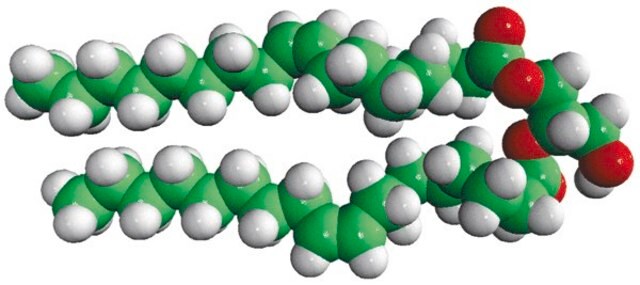850182P
Avanti
08:0 PI(4)P
Avanti Research™ - A Croda Brand
Sinonimo/i:
PIP[4′](8:0/8:0)
Scegli un formato
Scegli un formato
About This Item
Prodotti consigliati
Descrizione
1,2-dioctanoyl-sn-glycero-3-phospho-(1′-myo-inositol-4′-phosphate) (ammonium salt)
Saggio
>99% (TLC)
Stato
powder
Confezionamento
pkg of 1 × 100 μg (with stopper and crimp cap (850182P-100ug))
pkg of 1 × 500 μg (with stopper and crimp cap (850182P-500ug))
Produttore/marchio commerciale
Avanti Research™ - A Croda Brand
Tipo di lipide
phospholipids
cardiolipins
Condizioni di spedizione
dry ice
Temperatura di conservazione
−20°C
Stringa SMILE
[H][C@@](COP([O-])(O[C@H]1[C@H](O)[C@@H](O)[C@H](OP([O-])(O)=O)[C@@H](O)[C@H]1O)=O)(OC(CCCCCCC)=O)COC(CCCCCCC)=O.[NH4+].[NH4+]
InChI
1S/C25H48O16P2.2H3N/c1-3-5-7-9-11-13-18(26)37-15-17(39-19(27)14-12-10-8-6-4-2)16-38-43(35,36)41-25-22(30)20(28)24(21(29)23(25)31)40-42(32,33)34;;/h17,20-25,28-31H,3-16H2,1-2H3,(H,35,36)(H2,32,33,34);2*1H3/t17-,20-,21+,22-,23-,24+,25+;;/m1../s1
GRYUDEZZGXKOJR-JHABFHEXSA-N
Descrizione generale
Applicazioni
Azioni biochim/fisiol
Confezionamento
Note legali
Codice della classe di stoccaggio
11 - Combustible Solids
Classe di pericolosità dell'acqua (WGK)
WGK 3
Punto d’infiammabilità (°F)
No data available
Punto d’infiammabilità (°C)
No data available
Scegli una delle versioni più recenti:
Certificati d'analisi (COA)
It looks like we've run into a problem, but you can still download Certificates of Analysis from our Documenti section.
Se ti serve aiuto, non esitare a contattarci Servizio Clienti
Possiedi già questo prodotto?
I documenti relativi ai prodotti acquistati recentemente sono disponibili nell’Archivio dei documenti.
Il team dei nostri ricercatori vanta grande esperienza in tutte le aree della ricerca quali Life Science, scienza dei materiali, sintesi chimica, cromatografia, discipline analitiche, ecc..
Contatta l'Assistenza Tecnica.






